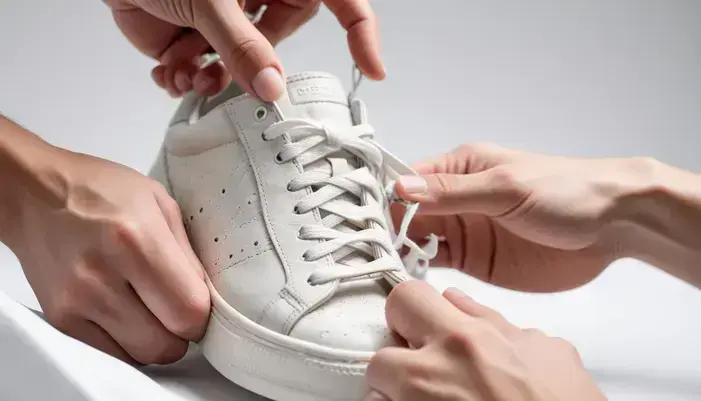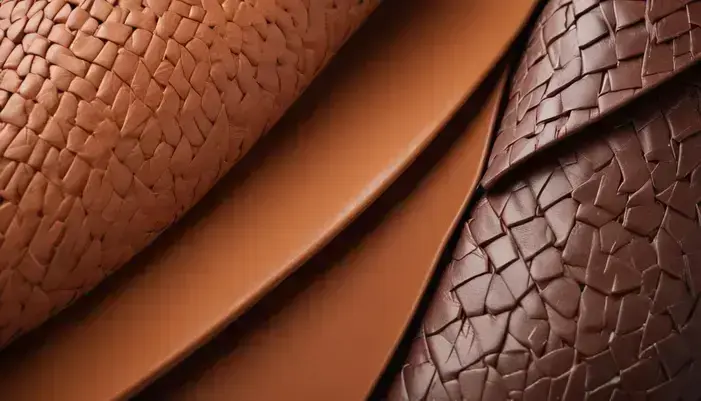How to Legit Check Sneakers: Key Details to Look For in 2025

Ever wondered if those legit check sneakers you’re eyeing are the real deal? With counterfeit sneakers becoming increasingly sophisticated, knowing how to authenticate your kicks has never been more crucial. I’ve seen collectors lose thousands on fakes that looked convincing at first glance.
Understanding sneaker authentication basics
Before you can spot a fake, you need to understand what makes a sneaker authentic. Legit checking starts with knowing the basic authentication principles that apply to nearly every brand and model. Think of it like learning a new language – you start with the alphabet before writing sentences.
The Three Pillars of Authentication
Most sneaker authentication relies on three key areas: materials, construction, and branding. Genuine sneakers use specific materials that feel and look different from fakes. The way shoes are put together follows precise factory standards. Branding elements like logos and tags have tiny details that counterfeiters often miss.
Start by examining a pair you know is real. Notice how the stitching looks, how the materials feel, and how the colors appear in different lighting. This reference point becomes your authentication foundation for comparing suspicious pairs later.
Common Red Flags to Watch For
Some warning signs appear across many fake sneakers. Poor stitching quality, glue stains, and mismatched colors are frequent giveaways. The smell of new sneakers can also be a clue – authentic pairs usually have a distinct factory smell rather than a strong chemical odor.
Remember that authentication isn’t about finding one perfect detail. It’s about looking at the whole picture and spotting inconsistencies that don’t match genuine pairs. Even experienced authenticators sometimes need to check multiple elements before making a final decision.
Examining the shoe box and packaging
The shoe box is often the first thing counterfeiters get wrong. Authentic sneaker boxes have specific construction details that are hard to replicate perfectly. Start by checking the cardboard quality – genuine boxes use sturdy, corrugated cardboard that maintains its shape.
Box Printing and Color Accuracy
Look closely at the printing on the box. Authentic boxes have crisp, clear logos and text without any blurriness or bleeding colors. The color of the box should match official product images exactly. Many fakes have slightly off-color boxes or logos that appear pixelated when examined closely.
Check the box labels for proper spelling, font consistency, and accurate product information. Manufacturer dates and style codes must match the shoes inside. Fake boxes often have typos, wrong font sizes, or incorrect product details that reveal their inauthenticity.
Tape and Sealing Methods
How the box is sealed matters too. Authentic sneaker boxes use specific tape patterns and placement. The tape should be evenly applied without wrinkles or air bubbles. Some brands use unique tape with logos or specific colors that counterfeiters rarely duplicate correctly.
Don’t forget to examine the interior packaging. Authentic shoes come with specific tissue paper, stuffing, or additional tags that maintain the shoe’s shape during shipping. The way these materials are folded and placed can be another authentication clue.
Analyzing stitching and construction quality
Stitching is one of the most reliable ways to spot fake sneakers. Authentic manufacturers use precise, consistent stitching patterns that are difficult for counterfeiters to replicate. Start by examining the thread quality – genuine sneakers use strong, uniform thread that doesn’t fray easily.
Stitch Count and Pattern Consistency
Count the stitches in key areas like the swoosh, heel tab, and toe box. Authentic pairs maintain consistent stitch counts across both shoes. Look for straight, even stitches without loose threads or irregular spacing. Fake sneakers often have uneven stitching with varying stitch lengths that reveal poor craftsmanship.
Pay attention to where different stitching patterns meet. Transition points should be clean and well-executed, not messy or overlapping. Authentic factories have quality control that ensures stitching connections are seamless and professional-looking.
Reinforcement Stitching and Stress Points
Check areas that bear the most stress during wear, like the toe box and heel counter. These areas typically have reinforced stitching that’s tighter and more durable. Counterfeit shoes often skimp on reinforcement stitching to save time and materials, making them less durable.
Don’t forget to check inside the shoe as well. The interior stitching should be just as clean and consistent as the exterior. Lining seams and tongue attachments should show the same level of craftsmanship throughout the entire shoe.
Checking logos and branding details
Logos and branding elements are critical authentication points that counterfeiters often struggle to perfect. Brands invest heavily in precise logo execution that’s difficult to replicate without proper equipment. Start by examining the size, placement, and proportions of all logos on the shoe.
Logo Symmetry and Alignment
Check if logos are symmetrically placed on both shoes. Authentic sneakers have logos that mirror each other perfectly in size, angle, and position. Use a ruler or measuring tool if necessary – even millimeter differences can indicate fakes. Pay special attention to logo alignment with stitching and other design elements.
Examine the logo quality under good lighting. Authentic logos have clean, sharp edges without any bleeding or fuzzy outlines. Counterfeit logos often appear slightly blurry, have uneven thickness, or show imperfections in the printing or embroidery process.
Brand-Specific Logo Details
Each brand has unique logo characteristics that authenticators should memorize. Nike swooshes have specific curvature and taper points. Adidas three-stripe logos maintain consistent spacing and width. Jordan Jumpman logos have precise anatomical proportions that fakes often distort.
Don’t forget smaller branding elements like tongue labels, heel logos, and insole printing. These secondary branding spots receive the same quality control as main logos. Fake sneakers often have poorly executed small logos that reveal their inauthenticity upon close inspection.
Inspecting materials and texture authenticity

Material quality is one of the hardest aspects for counterfeiters to replicate accurately. Authentic sneakers use premium materials with distinct textures that feel different from fakes. Start by running your fingers over the shoe’s surface to assess the material quality and consistency.
Leather and Synthetic Material Quality
Genuine leather should feel supple and develop a natural patina over time, while fake leather often feels plasticky and stiff. Press your thumb into the material – authentic leather will show slight creasing that slowly returns to shape. Synthetic materials should have consistent texture without any rough spots or uneven surfaces.
Examine how materials reflect light. Authentic materials have subtle, natural sheen rather than artificial gloss. High-quality suede and nubuck should have uniform nap direction and consistent color depth when brushed different ways.
Mesh, Knit, and Fabric Authenticity
For performance sneakers with mesh or knit uppers, check the weave pattern consistency. Authentic knit materials have tight, uniform patterns without loose threads or irregular holes. The elasticity should feel controlled and supportive, not overly stretchy or restrictive.
Don’t forget to check material thickness and weight distribution. Authentic sneakers maintain consistent material thickness throughout, while fakes often use thinner, cheaper materials in less visible areas to cut costs.
Verifying size tags and production labels
Size tags and production labels contain crucial information that counterfeiters frequently get wrong. These small details are authentication goldmines because they require precise printing technology that fake manufacturers often lack. Start by examining the tag’s placement inside the shoe.
Tag Information Accuracy and Formatting
Check that all information on the tag matches the shoe model and release details. The style code, manufacturing date, and country of origin should be consistent with known authentic pairs. Authentic tags use specific font styles and sizes that remain consistent across production runs.
Examine the printing quality closely. Authentic tags have crisp, clear text without any smudging or bleeding. The text should be evenly spaced and properly aligned. Fake tags often show pixelation, uneven ink distribution, or incorrect font weights when compared to genuine examples.
Tag Material and Attachment Methods
Feel the tag material itself – authentic tags use specific paper or fabric types that have distinct textures. The way the tag is attached to the shoe also matters. Genuine tags are securely stitched or heat-pressed without loose edges or crooked placement.
Don’t forget to verify QR codes or barcodes if present. These should scan properly and lead to correct product information. Counterfeit tags often have fake barcodes that don’t scan or lead to generic websites instead of brand authentication pages.
Comparing colorways and color accuracy
Color accuracy is a common stumbling block for counterfeit manufacturers who often work from poor reference photos. Authentic sneakers maintain precise color consistency across production batches that fakes struggle to match. Start by examining the shoes in natural daylight for the most accurate color assessment.
Primary Color Matching and Saturation
Compare the shoe’s colors against official product images from the brand’s website or trusted retailers. Authentic pairs should match these references exactly in hue, saturation, and brightness. Be particularly careful with subtle color gradients and transitions – these are difficult for counterfeiters to replicate accurately.
Check how different materials handle the same color. Colors should appear consistent across leather, suede, and synthetic materials despite their different textures. Fake sneakers often show color variations between materials that reveal inconsistent dye lots or poor quality control.
Accent Colors and Special Finishes
Pay close attention to smaller accent colors on logos, stitching, and detailing. These secondary colors are often overlooked by counterfeiters but are crucial for authentication. Metallic finishes, pearlescent effects, and special coatings should match authentic examples precisely.
Don’t forget to examine color consistency between the left and right shoe. Authentic pairs are manufactured together using the same materials and dyes, ensuring perfect color matching. Any noticeable difference between the two shoes is a major red flag.
Using digital tools for authentication
Modern technology has revolutionized sneaker authentication, providing powerful tools that complement traditional inspection methods. Digital authentication tools can analyze details invisible to the naked eye, offering an additional layer of security against increasingly sophisticated fakes. Start by exploring the various types of digital tools available.
Mobile Apps and Scanning Technology
Several authentication apps use your smartphone’s camera to analyze sneakers through advanced image recognition. These apps compare your photos against databases of authentic pairs, checking for inconsistencies in stitching patterns, logo proportions, and material textures. Some even use augmented reality to overlay correct measurements and alignments.
QR code and NFC chip scanning have become more common in recent releases. Brands are embedding digital verification directly into their products through smart tags that can be scanned with your phone. These digital certificates provide instant authentication when scanned through official brand apps.
Online Verification Services and Communities
Professional authentication services offer detailed analysis through high-resolution photo submissions. These services employ experts who examine multiple angles of your sneakers and provide certified authentication reports. Many resale platforms now include built-in verification that uses both human experts and AI analysis.
Online communities and forums remain valuable digital resources where you can crowdsource opinions from experienced collectors. While not foolproof, these communities often spot details that automated systems might miss, combining collective knowledge with technological tools.
Mastering the Art of Sneaker Authentication
Learning how to legit check sneakers properly takes practice, but the skills are worth developing. By combining traditional inspection methods with modern digital tools, you can confidently verify your sneakers’ authenticity.
Remember that no single detail proves authenticity – it’s about looking at the whole picture. Consistent stitching, proper materials, accurate branding, and correct labeling all work together to tell the real story.
As counterfeiters improve their techniques, staying informed about the latest authentication methods becomes increasingly important. The knowledge you’ve gained here will help protect your investments and ensure you’re getting genuine products.
Keep practicing these techniques, and soon you’ll be spotting fakes with the confidence of a professional authenticator.






